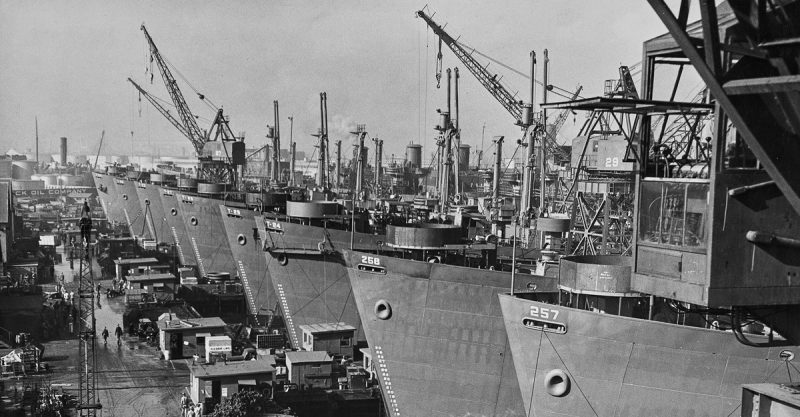
Themistocles famously declared, ‘He who commands the sea commands everything.’ Yet, judging by the current state of American maritime power, that statement rings hollow. The US, a nation reliant on ocean shipping for approximately 80% of its international trade by weight, finds itself astonishingly dependent on foreign powers for even the most basic aspects of maritime commerce.
This dependence extends far beyond just the transportation of goods. Our armed forces, too, rely heavily on seaborne supplies, with nearly 90% of their equipment and necessities arriving by ship. The ability to rapidly construct warships and support vessels – crucial in times of national emergency – is severely compromised by our lack of domestic shipbuilding capacity.
The statistics paint a stark picture. A mere 0.13% of the world’s large vessels are built in the United States, a stark contrast to China’s dominance, which accounts for roughly 60% of new shipbuilding orders and boasts over 200 times America’s capacity. Not only are most US imports and exports transported on foreign-built ships, but these ships are also owned and crewed predominantly by a handful of European and Asian giants, consolidating control over nearly 90% of US containerized shipping through powerful cartels.
This foreign control extends even to the infrastructure supporting shipping. A single Chinese corporation produces 80% of the ship-to-shore cranes in US ports, while China also dominates the manufacturing of truck chassis (86%) and shipping containers (95%). The consequences of this dependence became brutally clear during the early days of the pandemic, when foreign cartels exploited the situation, raising shipping costs by up to 1000% and rejecting millions of dollars’ worth of US agricultural exports while making record profits.
The national security implications are equally alarming. The US faces a critical shortage of civilian mariners to crew Navy support vessels, forcing the Navy to sideline 17 support ships due to crew shortages. The lack of readily available support ships themselves is even more concerning; in a Pacific conflict, the US would need over 100 fuel tankers, but currently has access to only about 15.
How did we get here? The answer lies in a combination of historical missteps and policy failures. The early 20th century saw ruinous competition in the shipping industry, leading to the formation of unregulated cartels that operated at the public’s expense. Simultaneously, the US government neglected maritime policy, failing to provide the support given by foreign governments, particularly Britain. This led to a dramatic decline in US shipbuilding and shipping, leaving the nation vulnerable when World War I disrupted European shipping.
The crisis spurred action; Congress invested heavily in shipbuilding, resulting in a surge in capacity and making the US the world’s leading shipbuilder. Crucially, the government also implemented regulations to control the industry, preventing anti-competitive practices and ensuring fair treatment for all shippers. However, this approach was abandoned during the 1980s under the Reagan administration, leading to deregulation and a renewed era of ruinous competition. This ultimately resulted in the acquisition of major US shipping lines by foreign corporations and the near-total collapse of US shipbuilding.
Today, the US produces only a handful of large commercial vessels annually, relying heavily on naval contracts – ironically, often fulfilled by foreign shipyards. While bipartisan bills and executive orders aim to address the issue, these measures fall short of the fundamental solution: the reinstatement of a system of regulated competition that prioritizes public interest. This would involve empowering the government to oversee shipping cartels, ensuring fair pricing and access for all shippers, and preventing price gouging or ruinous competition. Coupled with robust investment in shipbuilding, port services, and mariner training, this could pave the way for a new era of American maritime dominance.









